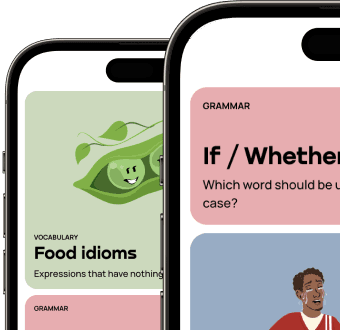Complément d’objet direct – Master direct object pronouns in French
Contents
Key takeaways
- A direct object pronoun replaces the noun directly receiving the action of the verb.
- French direct object pronouns: me, te, le, la, nous, vous, les.
- They are placed before the verb in most tenses.
- With compound tenses, agreement is required when the pronoun precedes the verb.
- Essential for speaking fluently without repeating nouns.
What Is a Direct Object in French?
A direct object is the person or thing that directly receives the action of the verb, without a preposition.
- Je vois Marie. → I see Marie.
- Je la vois. → I see her.
The List of French Direct Object Pronouns
| Pronoun | Meaning | Example |
| me / m’ | me | Il m’aime. → He loves me. |
| te / t’ | you (informal) | Je t’entends. → I hear you. |
| le | him/it (masc.) | Je le connais. → I know him. |
| la / l’ | her/it (fem.) | Je la vois. → I see her. |
| nous | us | Tu nous invites. → You invite us. |
| vous | you (formal/plural) | Je vous comprends. → I understand you. |
| les | them | Je les attends. → I’m waiting for them. |
Placement of Direct Object Pronouns
Simple tenses
Direct object pronouns go before the verb:
- Je le mange. → I eat it.
Compound tenses
Placed before the auxiliary verb:
- Je les ai vus. → I saw them.
Past participle agrees with the pronoun: vus (masculine plural).
With infinitives
Placed before the infinitive:
- Je vais le lire. → I’m going to read it.
In the negative
Pronoun still precedes the verb:
- Je ne la connais pas. → I don’t know her.
Agreement with Past Participles
When the direct object pronoun comes before the auxiliary, the past participle must agree in gender and number:
- Les fleurs ? Je les ai achetées. → The flowers? I bought them.
- La lettre ? Il l’a écrite. → The letter? He wrote it.
1
Examples of Direct Object Pronouns
- Marie m’aide toujours. → Marie always helps me.
- Tu le connais ? → Do you know him?
- Ils nous attendent. → They are waiting for us.
- Je les ai invités à la fête. → I invited them to the party.
Common Mistakes
- Forgetting pronoun placement (putting it after the verb).
- Not making agreement with past participles.
- Confusing direct and indirect pronouns (le vs lui).
Exercises: Practice Direct Object Pronouns
1. Replace the object with a pronoun
- Je connais Paul. → ________
- Nous regardons la télé. → ________
- Tu invites Marie et Sophie. → ________
2. Translate into French
- I see him.
- She understands us.
- We invited them.
3. Correct the mistakes
- ❌ Je connais le.
- ❌ Elle voit nous.
Answers
- Je le connais | Nous la regardons | Tu les invites
- Je le vois | Elle nous comprend | Nous les avons invités
- Je le connais | Elle nous voit
Tips for Mastering Direct Object Pronouns
- Always ask “who? or what?” after the verb to find the direct object.
- Drill pronoun placement with flashcards.
- Practice agreement in compound tenses.
- Compare with English equivalents for easier recall.
For more practice, explore French verb tenses. And to plan your journey, check how long it takes to learn French fluently.
Summary
Direct object pronouns (compléments d’objet direct) like me, te, le, la, nous, vous, les replace nouns directly receiving the action. They go before the verb and require agreement in compound tenses.
Resources like Glossika’s guide to French Object Pronouns and Dummies’ explanation of how to use direct object pronouns offer deeper insights. With practice, sentences like Je le connais, Je la vois, Je les ai invités will feel natural as you learn French online.

Comments